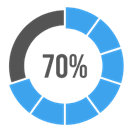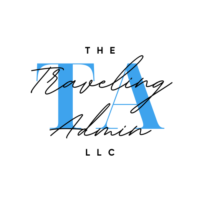How to Design the Perfect Onboarding Process
Do you want to increase your employee productivity by 70% for new hires?

How about decreasing employee turnover by 82%?

Imagine how much more your business will grow if you retain your new hires for a lifetime.
Before we get into how to design the perfect onboarding process, let’s discuss why an onboarding process is crucial to every business, especially the small business.
Why make onboarding processes?
- It’s about making your new employees feel welcomed on the first day of their new job.
- It’s about building a company culture where everybody feels part of the group.
- It’s about getting your employees up to speed and shorten the time for them to perform.

Now that we’ve reviewed the 3 biggest reasons to have a process, let’s get into how to design one. Onboarding processes can come in many shapes and forms. There is no one size fits all. Below are some best practice examples and a flow that you can set up and can add your own processes and task to. Here’s a preview of how the process should flow. These processes can be automated to save a ton of time!
Pre-Onboarding Phase – This phase takes place after you have decided on the candidate to hire up to the initial start date. This is a best practices list of the three key points to focus on when getting started.
Three key points to pre-onboarding:
- Welcome Message – A welcome message because first impressions do matter. Send your new employee a welcome message that builds their excitement and lets them know you are really excited to get them started in a few weeks. Long waits between “You’re hired!” to day one start with no communication can be dreadful for a new hire. Never leave them feeling uncertain.
- Meet the team – Send a video message. Introduce the team before the employee starts work by way of a short video message. This will reduce the stress of the new employee because they will see faces that recognize already, in turn making them more comfortable and feel as though they are a part of the team before day one. You can send this as part of the “Welcome Message” or send it the week before your new hire starts work.
- Practical information – Provide a co-boarding buddy, a schedule, and the basics. Assign the new employee a buddy that can help them maneuver their first day. Provide them with a first day schedule so that they will know when to meet, who will greet them, and what is going to happen on their first day.
Example: Today’s Agenda:
-
- Meet your new colleagues
- Company Tour
- Our mission and values
On-boarding Phase (First day) – This phase takes place after you have officially hired and welcomed your new employee.
Welcome and Tour
-
- Truly make them feel welcomed – Do this by giving them a welcome gift (i.e.: company swag, flowers, goodie bag, quirky gifts, etc.) Remember, first impressions are priceless. Making new or old employees feel appreciated always makes for a happier employee!
- Introduction to new colleagues and staff – Always involve senior managers and or the CEO by having them stop by and either take questions or give a speech (if you hire in groups). It’s always a plus to a new hire that the CEO takes the time to meet and greet them authentically. Set up a time for an informal Q&A with the HR department. They can answer a ton of new hire questions and highlight any employee discounts.
- Getting to know the company – have co-boarding buddy provide a company tour (i.e.: where to get coffee, where to get PC fixed if broken, etc.)
Setting Up and Initial Training
-
- Help employee set up their work area, equipment (i.e.: computer, phone, etc.), and anything else that they need to do their job.
- Start initial training to learn overall processes (i.e.: how to clock-in and out)
In-Depth Training
-
- Blended learning (hands-on, classroom, online, etc.) is the best way to train new employees. No one wants to learn their job from the 40-hour e-learning program that was created in the early 90’s. Besides, how are they going to remember all that training and hit the floor running if they were falling asleep from module to module? Instead, have them train in an area via e-learning, then train hands-on in that area of development. Then head back to e-learning and repeat the process. Have live trainings by a developed employee from that department you hired the employee to work in.
- Split up the training (never throw everything at the employee at once). Deliver training content in snackable pieces followed by short quizzes to test their knowledge.
- Have continuous 1 on 1’s with new employee to check their progress and understanding of their new position or job throughout their training.
Power Tip:
Send managers a checklist 24 hours prior to a new hire start date. Include the following in the checklist:
-
- Discuss roles and responsibilities
- Match new hires with peer buddies
- Help the new hire build a social network
- Set up employee onboarding check-ins one a month for the new hire’s first six months
- Encourage open dialogue
I have created a generalized checklist you can use as a company to walk you through the onboarding process. Feel free to add to it. If you would like The Traveling Admin to create a personalized onboarding process or checklist for your company, contact us today!
Remember: Onboarding is NOT Orientation. They are distinctly two different things. To learn more about employee orientation, click here.
Source Credits: Actimo.com
Writer: Jennifer Brown

